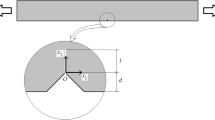Abstract
This paper suggests some new evaluations for multiaxial-stress properties of ceramic materials. These evaluations include some that have been used for other kinds of materials, as well as others which have not been previously employed. In some cases, these methods represent modifications of existing evaluations.
The paper is confined to macroscopic behavior based upon bulk laboratory specimens. The influences of volume, stress gradients and localized behavior are not considered here since considerable attention has recently been devoted to these questions. The important problem of fracture strength will not be considered since this property appears to be considerably influenced by localized microscopic behavior. However, new evaluations of remaining mechanical properties for states of combined stresses will be presented. These include elastic and plastic strength, stiffness, ductility, resilience and toughness. Emphasis on combined-stress properties was selected since recent critical reviews indicate the need for for such an evaluation. Part A of this paper outlines new experiments that are needed to evaluate the mechanical properties and to confirm theories proposed in Part B. In Part B of this paper, new macroscopic engineering-type theories for combined-stress behavior are presented for the first time. These theories attempt to predict combined-stress behavior from uniaxial tension and compression (or pure bending and compression) behavior. These theories provide for materials such as ceramics with different properties in tension and compression. A final section of this presentation is devoted to improvements in the evaluations of other mechanical properties of materials as related to high-temperature creep and fatigue properties.
Similar content being viewed by others
References
Pask, J. A., “Mechanical Properties of Ceramic Materials,” Mechanical Behavior of Materials at Elevated Temperatures (ed. J. E. Dorn), McGraw-Hill Book Co., 288–319 (1961).
Kriegel, W. W., and Palmour, H., III (eds.), “Mechanical Properties of Engineering Ceramics,” Proc. Conf., Interscience Publishers (1961).
Shook, W. B., “Critical Survey of Mechanical Property Test-Methods for Brittle Materials,” Tech. Rpt. No. ASD-TDR-63-491, AF Matls. Lab. U. S. Air Force, Wright-Patterson Air Force Base, 135 (July 1963).
Barnett, R. L., “Review of Structural Techniques for Brittle Components under Static Loads,” ARF Rpt. No. 8259, Phase 1-Task 2 for Aeronautical Systems Division, U. S. Air Force, Wright-Patterson Air Force Base, 123 (May 1963).
Brittle Materials Symposium, 425 (Dec. 1960).
Weil, N. A. (ed.), “Studies of the Brittle Behavior of Ceramic Materials,” ASD Tech. Rpt. 61–628.
Walton, W. H., “Mechanical Properties of Non-Metallic Brittle Materials,”Interscience Publishers, New York (1958).
Parker, E. R. (ed.), “Materials for Missiles and Spacecraft,” McGraw-Hill Book Co. (1963).
Nadai, A., “Theory of Flow and Fracture of Solids,” 1,McGraw-Hill Book Co. (1956).
Marin, J., “Mechanical Behavior of Engineering Materials,” Prentice-Hall (1962).
Marin, J., “Mechanical Properties of Engineering Materials: Macroscopic Behavior,” Proc. Conf. Structure and Properties of Engineering Materials, North Carolina State College, Raleigh, N. C. (1962).
Hu, L. W., “Development of Triaxial Stress Testing Machine and Triaxial Stress Experiments,”Proc. SESA, XVI (2),27–38 (1959).
Hu, L. W., “An Experimental Study on the Fracture of Metals under Hydrostatic Pressure,”Jnl. Mech. and Physics of Solids,4,66–103 (1956).
Author information
Authors and Affiliations
Additional information
Joseph Marin was Professor and Head, Department of Engineering Mechanics, The Pennsylvania State University, University Park, Pa., at time this paper was prepared
Rights and permissions
About this article
Cite this article
Marin, J. New evaluations for multiaxial-stress properties of ceramic materials. Experimental Mechanics 6, 162–170 (1966). https://doi.org/10.1007/BF02326145
Issue Date:
DOI: https://doi.org/10.1007/BF02326145




